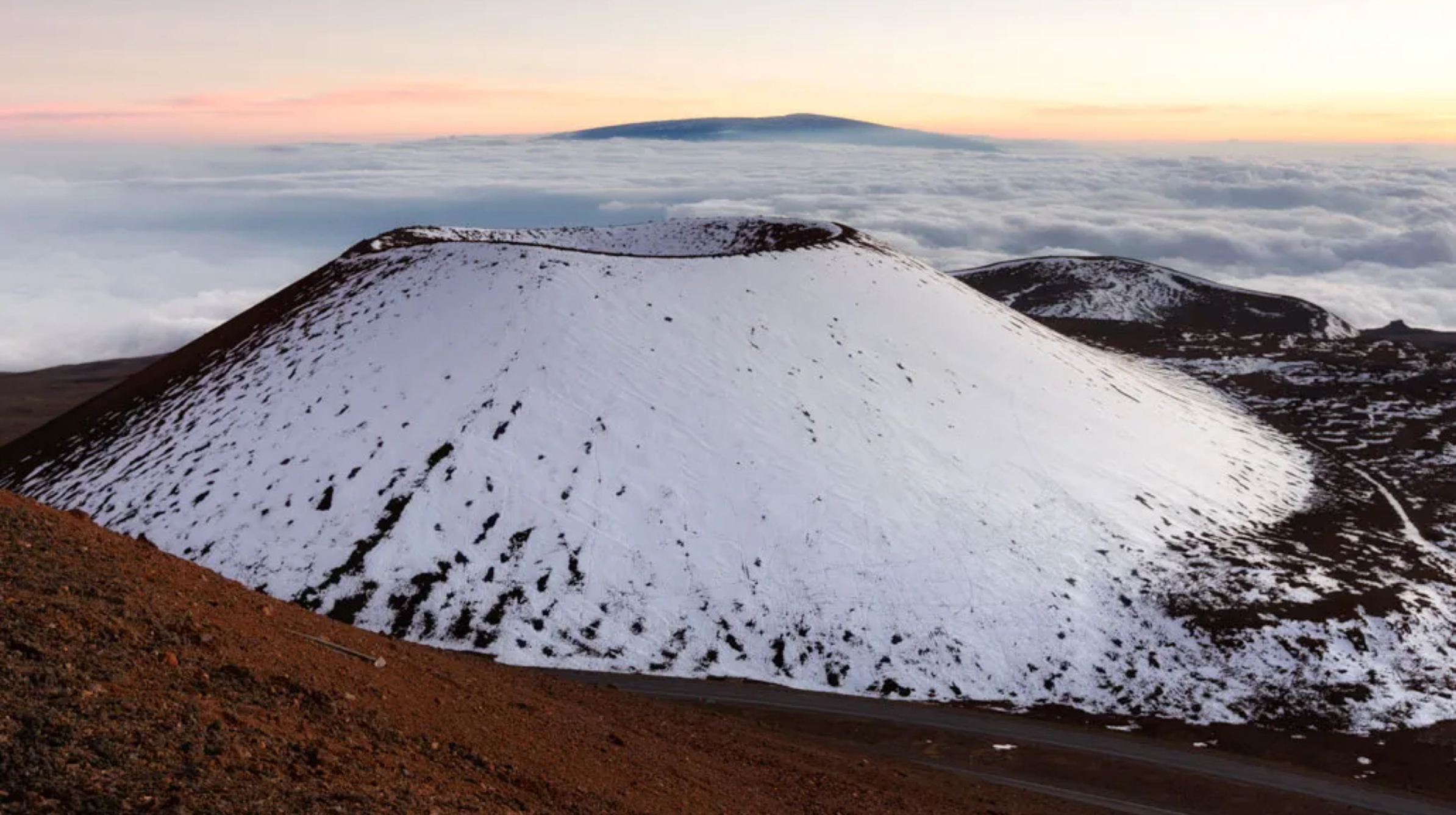Everything You Need to Know About Visiting Mauna Kea Observatory

(PHOTO CREDIT: JUSTINREZNICK/ISTOCK / GETTY IMAGES PLUS)
Tucked away in the lush, misty uplands above Kona, Kona Cloud Forest Sanctuary offers an immersive experience of Hawaii’s rarest ecosystem—where native ferns, giant bamboo, and towering ʻōhiʻa trees breathe the clouds. It’s a space to slow down, ground in nature, and expand your perspective. But for those looking to take that expansion even further—into the cosmos—there’s no better complement to the forest than a visit to Mauna Kea, a spiritually significance place to Native Hawaiians, and home of one of the most important astronomical observatories on Earth.
If you’re planning to connect Earth and Sky on your Big Island journey, here’s everything you need to know!
What Is Mauna Kea?
Mauna Kea is not only Hawaii’s tallest mountain—it’s the tallest mountain in the world if measured from its base on the ocean floor. Rising 13,803 feet above sea level, its summit towers above the clouds and offers unmatched stargazing thanks to its high altitude, dry air, and minimal light pollution.
The mountain and summit is a sacred place. For Native Hawaiians, Mauna Kea is deeply revered, seen as the meeting place of Earth and Sky, a temple of Wākea (sky father).
How to Get There from Kona Cloud Forest Sanctuary

(Photo Credit: Big Island Jeep Rentals)
- Distance: ~2.5 hours (85 miles)
- Route: Take Mamalahoa Hwy (Hwy 190) to Saddle Road (Hwy 200), which winds across the island to the Mauna Kea Access Road.
- Stop for Fuel & Snacks: There’s no food or fuel past the Saddle Road junction, so stock up in Waimea or Hilo, depending on your direction.
🚨 IMPORTANT: Regular rental cars are not allowed to go past the Visitor Information Station at 9,200 ft. You’ll need a 4WD vehicle to reach the summit—or book a guided tour. All cars will be stopped and checked at the visitor center for 4WD capabilities. The road to the Observatory is very steep and you will NOT be allowed to pass without having a 4WD car.
Can You Visit the Observatory?

(Photo Credit: Big Island Guide)
The actual observatories are not open to the public for interior tours, but the Onizuka Center for International Astronomy Visitor Information Station (VIS) offers:
- Stargazing events with volunteer astronomers
- Short hikes, including the 0.6-mile Mauna Kea Trail to a stunning hilltop view
- Interpretive exhibits about astronomy and Hawaiian cultural perspectives
Note: Nighttime stargazing programs are currently paused or modified, so check updates before you go: https://www.ifa.hawaii.edu/info/vis/
How to Prepare – Physically & Spiritually

(Photo Credit: Hawaii Magazine)
Visiting Mauna Kea isn’t like a typical tourist outing—it’s an ascent into a sacred space. Here’s how to show up with respect and readiness:
💨 Acclimate Slowly
- The summit has 40% less oxygen than sea level. It is recommended to stop at the Visitor Station for at least 1 hour to acclimate.
- It is common to experience lightheadedness and get out of breath faster at high altitudes.
- ⚠️If you are under 13 years old, pregnant, have heart or respiratory conditions, or went scuba diving recently, consult your doctor before going as altitude sickness can be potentially live threatening and dangerous!
❄️ Dress Warm
- Temperatures at the summit can dip below freezing—yes, even in Hawai’i! If you’re planning to go stargazing, it’s important to bring layers. Once the sun disappears, it gets surprisingly cold, fast!
- Recommended layers include a jacket, hat, scarf, and gloves. Some people even take pillows, blankets, and sleeping bags to the top where they can lay in the back of their car and open up the trunk!
🪶 Respect the Sacred
- Mauna Kea is more than a mountain—it is Kupuna (Elder). Hawaiian cultural practitioners often ascend for ceremony and prayer.
- Walk gently, speak with reverence, and stay on trails to protect native species like the endangered Mauna Kea silvers word.
- At the road turn off, where Saddle Road turns to Mauna Kea Access Road, some people pull to the side of the road and bring offerings and prayers. Offerings of food, flowers, ti leaves, and other biodegradable items that hold cultural or personal significance can be seen respectful.
🌟 Additional Tips for Stargazing on Mauna Kea

(Photo Credit: Adventure in Hawai’i)
- Best Time: After sunset, closest to the time of the New Moon. Opt for clear and dry nights!
- Gear: Bring a red flashlight (to preserve night vision), binoculars, or a star app. Make sure you also bring extra water to stay hydrated and move slow to acclimate to the altitude changes.
- Tours: Consider a guided summit & stargazing tour for safe transport, food, telescopes, and appropriate clothing included.
- You don’t have to go all the way to the summit, there are a lot of places along the road with lots of space where you can safely pull off.
Pair It With Your Kona Cloud Forest Experience
The Kona Cloud Forest nourishes your connection to Earth, reminding you how alive and intelligent nature is. A trip to Mauna Kea opens your awareness even wider—to the stars that have guided Polynesians for millennia and the galaxies that stretch infinitely above.
Together, they create the perfect balance of grounding and awe. A day spent walking under misty canopy, and a night under the Milky Way—this is the magic of the Big Island!
Book your forest experiences here:https://fareharbor.com/embeds/book/konacloudforest/items/?full-items=yes&back=https://konacloudforest.com/&g4=yes
Final Notes

(Photo Credit: Mauna Kea Summit Adventures)
- Fees: No entry fee to Mauna Kea or the Visitor Center
- Summit Access: Road to summit closes during bad weather; always check the Mauna Kea Weather Center before you go.
- Restrooms: Available at the Visitor Station—not at the summit
- Altitude Limitations: Consult with your doctor before going if you have any health contraindications.
🌺 “E mālama i ka ʻāina” – Care for the Land
Visiting Mauna Kea is a privilege. May your journey be filled with respect, wonder, and stillness. And may you carry the majesty of this island with you long after you descend from the clouds!
